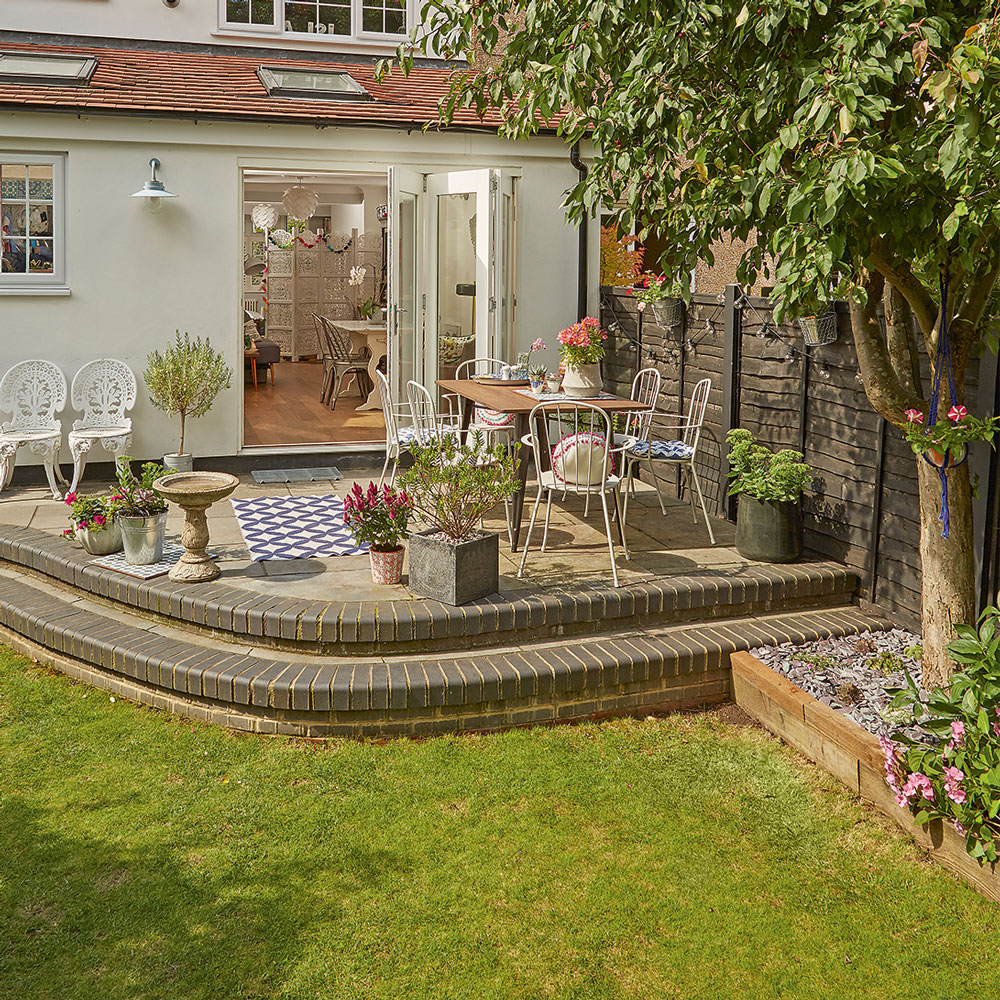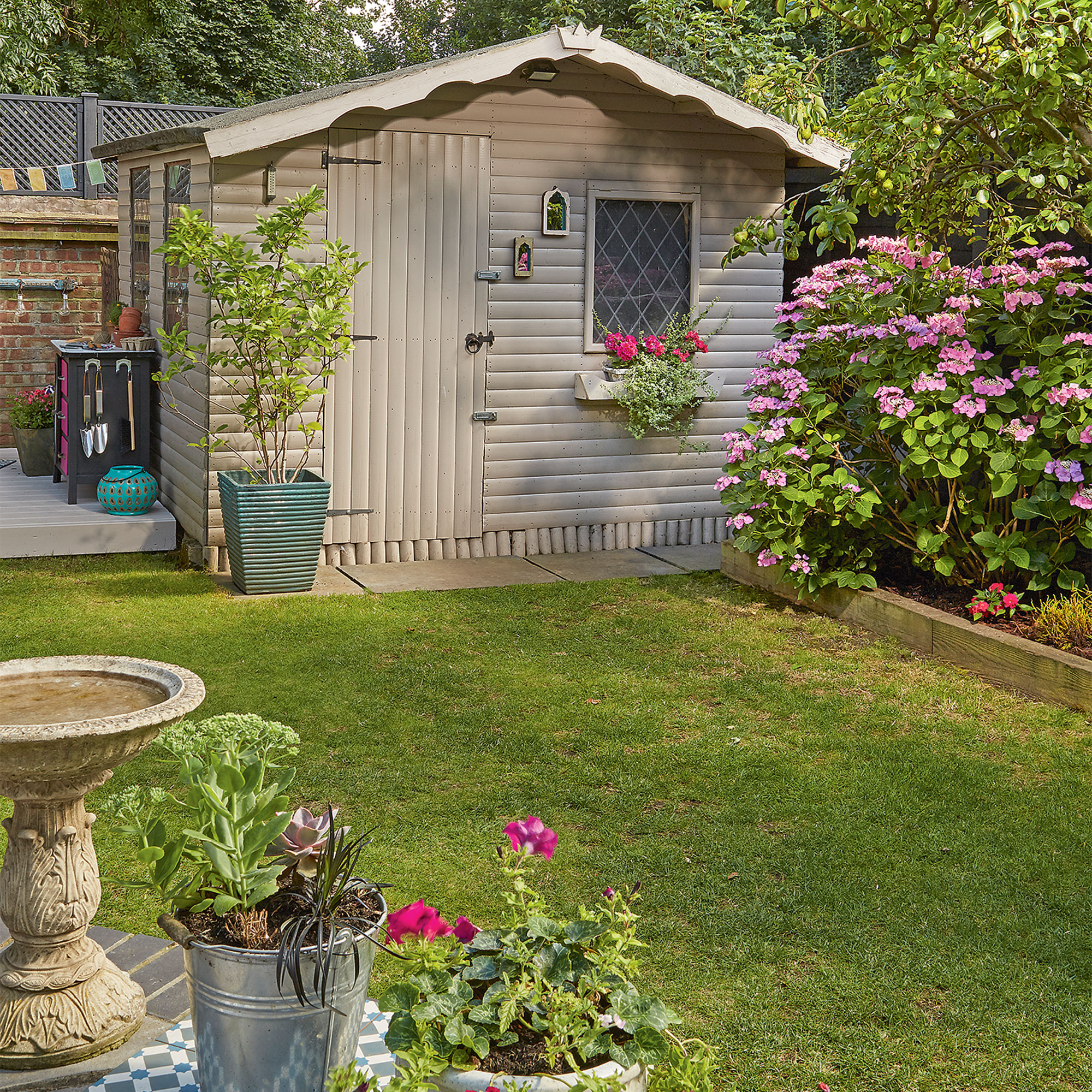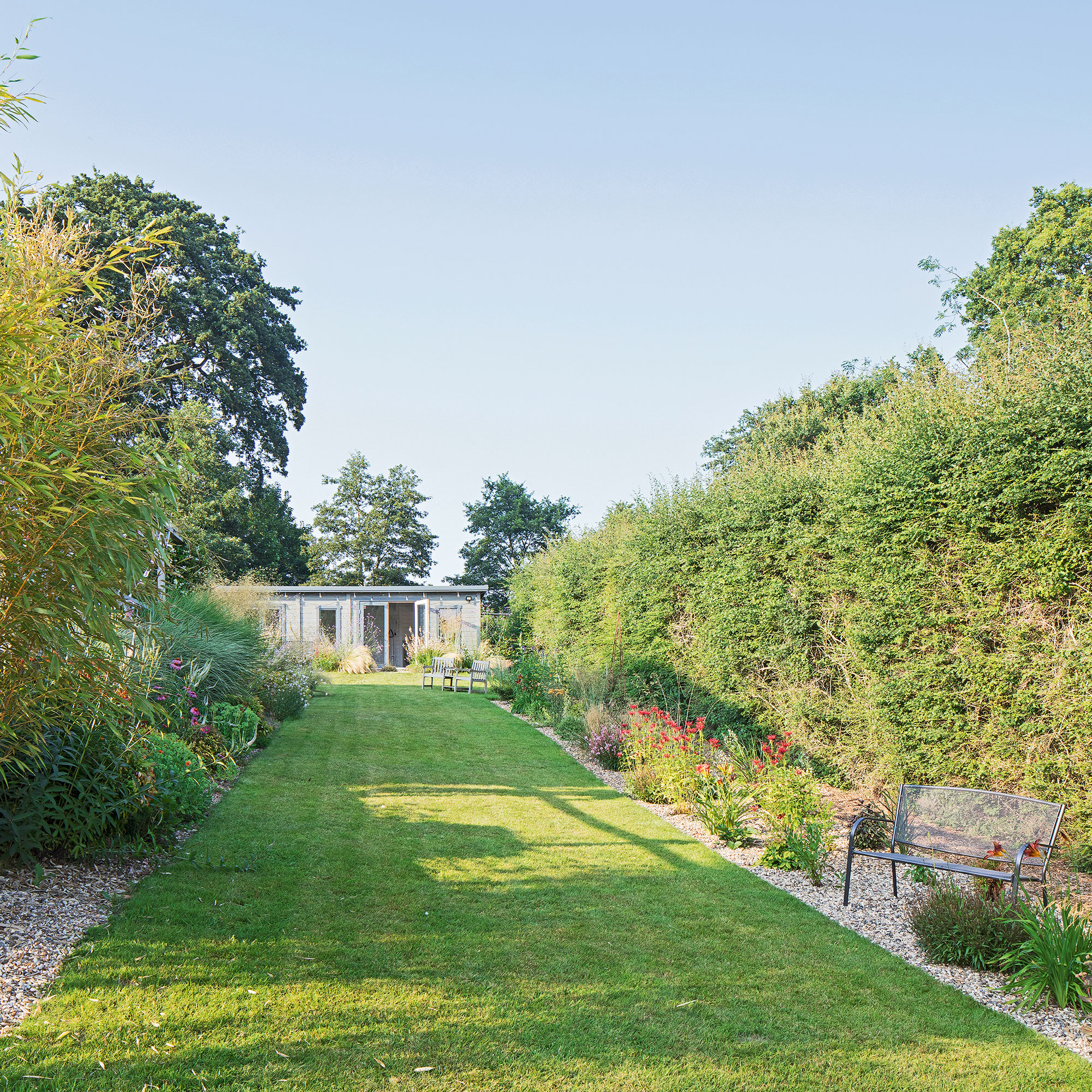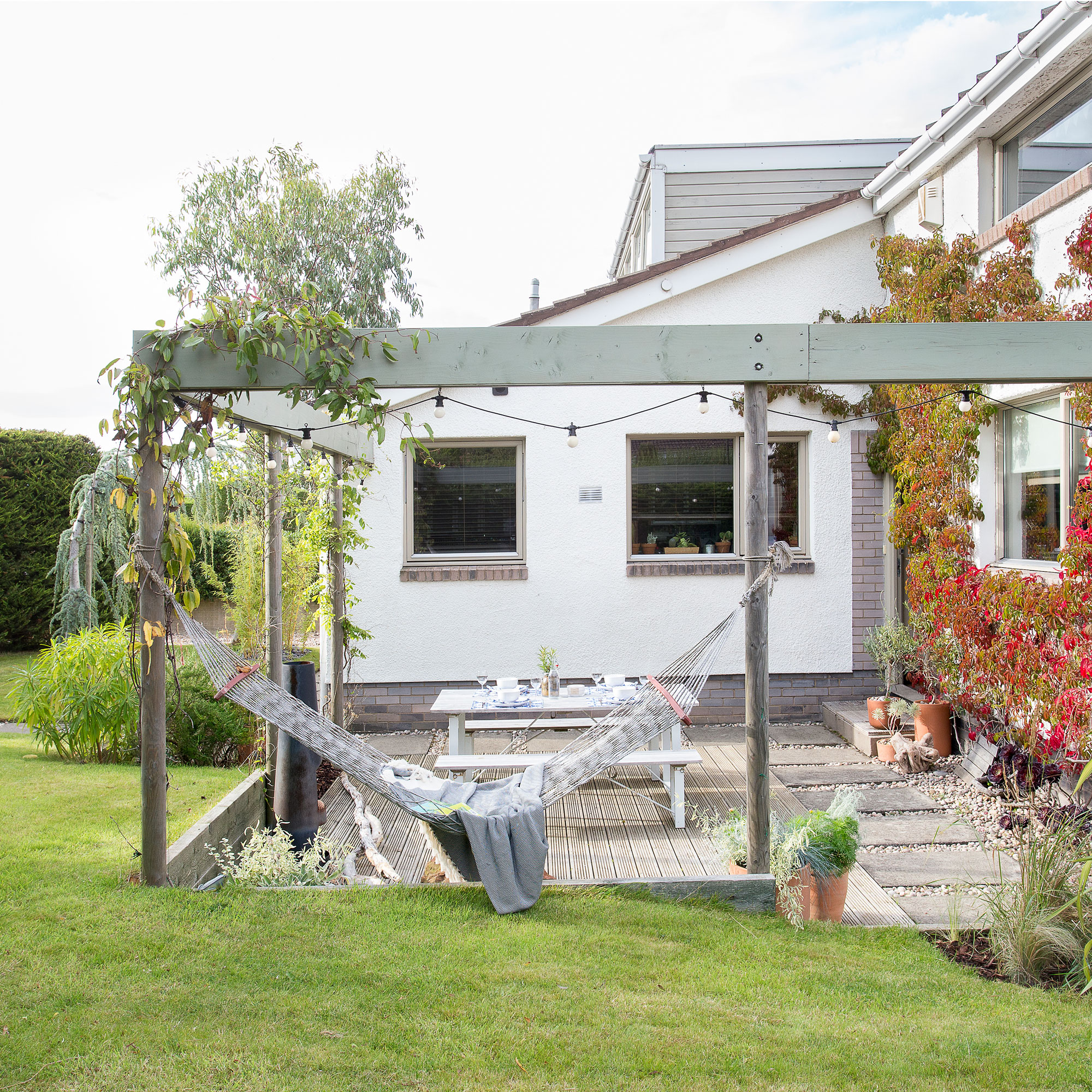
During the summer months, many water companies choose to enforce hosepipe bans. And while we understand why, there’s no denying our concern for our lawns when this happens. But, thankfully, there are many water-saving tips to look after your lawn during a hosepipe ban.
Yes, when you put time, effort, and money into your lawn care techniques, a hosepipe ban can leave you reeling. A hosepipe ban doesn’t mean the end of your lawn care ideas, though. You don’t have to twiddle your thumbs and wait for your lawn to turn brown, either.
You can still uphold the law (and, ultimately, avoid a hefty fine) by finding alternative ways to maintain your lawn during a hosepipe ban. And with the help of experts, we’ve explained all of these hosepipe ban lawn tips below.

1. Check your water provider’s rules
Although you might assume that a hosepipe ban is black or white (i.e. you either can or can’t use your garden hose), what you might not realise is that the rules differ depending on your water provider. That’s why you should always check your water provider’s rules during a hosepipe ban.
Carlos Real, lawn care expert and Managing Director of TotalLawn, explains, 'Although you won’t be able to use a hose to water your lawn, each water provider follows its own set of rules, so it’s best to double check yours first.’
2. Water with grey water
If you can’t use fresh water from your hose, you can just use grey water instead. This is the water that would typically go down your plughole (e.g from baths or boiling your vegetables) that can then be used to look after your lawn during a hosepipe ban.
Gardening expert Laura from Luxury Rattan also suggests, ‘'While you wait for your shower to heat up, position a bucket directly under the shower head to collect any unused water.’
You can then transfer this water to a watering can and water your lawn to prevent scorching or browning.
3. Rotate garden furniture
To prevent brown patches on your lawn, Laura recommends you place your best garden furniture on a patio, decking or artificial grass to help keep your lawn free. 'If this isn’t an option, make sure to rotate your garden furniture regularly to help prevent damage to your lawn,' she says.
In fact, you shouldn’t keep furniture on grass anyway, so moving and rotating your furniture is a great habit to get into regardless of the hosepipe ban.
If you love the price of this set as much as we do, you should definitely add it to your garden. Just make sure you keep it away from your lawn during a hosepipe ban.

4. Conserve moisture
Although the hot conditions will dry out the top layer of grass during a hosepipe ban, there’s probably still moisture in the soil. So, you want to conserve as much of that as possible.
One way to do that is by mulching your lawn. Jess Thomas at Drainage Central, advises, ‘Apply a layer of mulch to help lawn retain moisture. Wood chippings are a good option, and this will help to retain moisture and keep soil cool.’
If you’ve recently mowed the lawn and have a bag of grass clippings waiting for the waste collectors, you could also use them as mulch, too.
Sean Lade, Managing Director of Easy Garden Irrigation, says, ‘Leaving the leftover clippings on the lawn can serve as a natural mulch.’
This chipped bark can be placed on your lawn to conserve the moisture underneath your soil. It's also full of nutrients.
5. Mow with caution
Although it’s important to maintain your lawn mowing calendar, a hosepipe ban is definitely seen as an extenuating circumstance. And in dry weather, it’s important to keep the height of your lawn higher to avoid weakening the grass.
In fact, you shouldn't need to take your best lawn mower to your grass as often in dry weather as grass grows more slowly when it's dry, and mowing too short can severely damage your lawn.
Jess says, ‘The longer grass also acts as shade for the soil, which is important if it's sunny. If the lawn MUST be mowed, you'll need to make sure not to cut more than a third of the length.’
This lawn mower is top of the class and will allow you to change the height of the cut to suit the hosepipe ban.
6. Collect and use rainwater
Rain harvesting has so many benefits, one of them being that you can use rainwater to water your lawn when the temperatures soar but hosepipe usage drops.
Jess says, ‘Invest in water butts or use other collection methods to collect and store rainwater as and when it falls. This water can then be used during dry periods/hosepipe bans to keep your lawn and garden hydrated, without having to turn on the main tap.’
And you don’t have to worry about your water butt ruining the aesthetic of your garden, either, as there are so many ways to make a cheap water butt look more attractive.
This 100-litre galvanised steel water butt is as attractive as they come and will make a striking feature in your garden. You can also use the water inside for your lawn during a hosepipe ban.

7. Use a watering can
One thing you might not realise is that you can still use a watering can to water your lawn during a hosepipe ban, and it's a lot easier to control the flow of water than with a hosepipe.
Admittedly, if you've got a big garden, this might not be practical, but if you have a smaller space, you'll be able to keep it looking healthy by watering it at cooler times of the day.
Just make sure you also know how often you should water your garden in hot weather.
If you want to water your lawn during a hosepipe ban, this watering can is a must-have and will help you keep your lawn hydrated.
8. Consider drip irrigation
If you want to look after your lawn during a hosepipe ban, it’s definitely worth investing in a drip irrigation system. These are often on timers, and can stretch across large gardens.
Sean says, ‘Drip irrigation systems can provide a level of assurance all year round, as due to their high efficiency, they are exempt from UK hosepipe bans because we are not trying to release loads of water at once.’
And while they’re not technically used for lawns, drip irrigation systems can be used near your lawn if you feel like your lawn needs a little drink during the hot weather.
Although this drip irrigation kit is primarily for containers, you can also move it near your lawn to keep it watered during the hot weather.
9. Aerate your lawn
Although aerating your lawn won’t help with the current hosepipe ban, it can help to keep your lawn healthy when the next one comes along.
Morris says, ‘Aerate your lawn to allow for good drainage, so when it does rain, the lawn has good soil structure and drainage to help it make the most of the water. There are aerating tools available which puncture the soil easily or you can just use a garden fork and push the fork into the soil all over the lawn.’
Plus, aerating your lawn will only improve the health of your lawn in the long run, so this step is well worth it.
Although you can just use a garden fork to aerate your soil, this aerator will make light work of this essential task and help your lawn out during the heat.

10. Leave it!
While you may be inclined to protect your lawn during a hosepipe ban, it’s important to note that you don’t necessarily have to do anything. In fact, Morris suggests leaving it brown.
He says, ‘Yes that’s right! Leave a scorched lawn because it will very likely grow back when there is rain or over the autumn months. While brown lawns don’t look so fantastic, grass is very resilient and should be fine in time.’
FAQs
Are new lawns exempt from the hosepipe ban?
Hosepipe bans are enforced by your water provider, so it’s always best to check the exemptions during this time. However, many providers understand the importance of watering new lawns, which is why new lawns are often exempt from hosepipe bans.
While the specifics change depending on the water provider, most will allow you to water your new lawn for 28 days after it's laid during a hosepipe ban. They may enforce specific timings for this, though. For example, you may only be allowed to do this during off-peak hours.
Can I fill a watering can from a hosepipe during a ban?
Yes, you can. Although hosepipe bans prevent you from using a hose to water your plants or your lawn, you can use that same hose to fill a watering can and water your garden that way. This is to prevent excessive water use or wastage.
You cannot use a hose to fill a water butt or any other water reservoir during a hosepipe ban, though.
So, there’s no need to let your lawn fade during a hosepipe ban.







